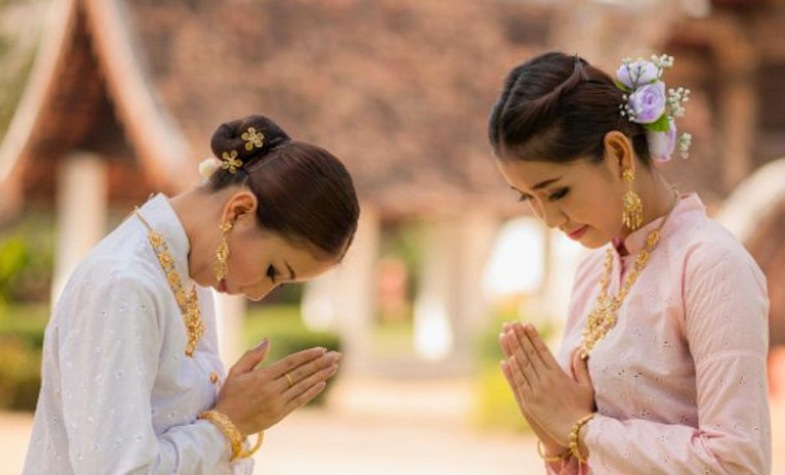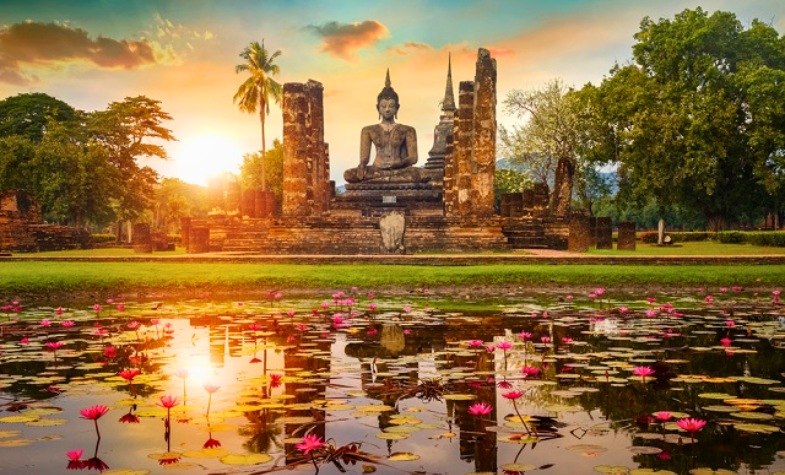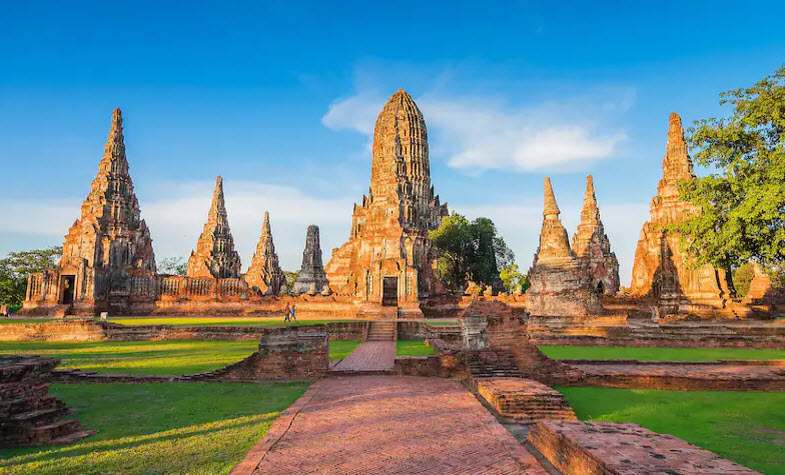The Thai people, formerly known externally as the Siamese, are the largest ethnic group in Thailand. They also form minority communities in neighboring countries such as Laos, Vietnam, Myanmar, India, and southern China. The official language spoken is Central Thai (also called Siamese). However, various local groups within Thailand speak their own languages, which are closely related to Central Thai. All these languages belong to the Tai-Kadai language family.

Origin of the Thais
Most Thai people practice Theravada Buddhism. The Thai ethnic group is traditionally divided into four main subgroups: Thai Trung, Thai Nam (Tai), Thai Northeast (Isan), and Thai Bac (Lan Na).
There have been various theories regarding the origin of the Tai - Kadai ethnic group, of which the Thai are a part. Some theories suggested a connection between the Tai people and the ancient Nanzhao kingdom, but these lack solid evidence and have been widely rejected.
Linguistic research indicates that the Tai people likely originated from the region around Guangxi Province in southern China, where the Trang subgroup is still predominant today. Other theories propose that the Tai founded the ancient kingdom of South Vietnam, which controlled large parts of southern China and northern Vietnam for about a century.
In 214 B.C.E., during the Qin Dynasty, Guangdong Province was established, marking the start of large migrations of Han Chinese moving southward. Facing political and cultural pressures from the north, some Tai groups migrated further south, where they encountered and blended with classical Indian cultures.

Thai Migrations
According to historical and linguistic evidence, the migration of Tai-speaking peoples to the southwest occurred between the 8th and 10th centuries. From the 10th century onward, Tai groups from the north gradually settled in the Chao Phraya River valley, a region formerly part of the Dvaravati culture. During this period, they assimilated the Mon and Khmer populations and interacted closely with the Khmer Empire. The Tai adopted Theravada Buddhism, which became a foundation of Thai culture. As a result, Thai culture today is a blend of Tai, Indian, Mon, and Khmer influences.
The earliest Thai sovereign states included the kingdoms of Sukhothai and Suphan Buri. The kingdom of Lavo, once the cultural center of the Khmer in the Chao Phraya valley, was also home to Thai communities. Although some Thai territories were occasionally under the rule of the Khmer Empire - under monarchs such as Suryavarman II and Jayavarman VII - most regions were effectively autonomous.
The Ayutthaya Kingdom
The kingdom of Ayutthaya, founded by King Uthong in 1350 and named after the Indian city of Ayodhya, became the political and cultural center of the Thai people. After the Khmer Empire weakened following the fall of Angkor in 1431, Ayutthaya expanded eastward, consolidating power in the region.

Ethnic Diversity and Cultural Influence
Under Thai rule, diverse ethnic groups - including Mon, Khmer, Lao, as well as immigrants from China, India, and Muslim communities - were gradually assimilated. At the same time, these groups contributed significantly to Thai culture, philosophy, economy, and politics.
In the article Jek pon Lao (เจ้ ก ป น ลาว - Hoa bred with Laos), Sujit Wongthet, who identifies as Lao - Chinese, highlights that modern Thais are a mixed people, largely descended from Chinese and Lao ancestries. He emphasizes that Thai identity today is not defined by a single ethnicity but rather by a blend of multiple races and cultures. Among these, Thai people of Chinese descent form the largest and most influential group.
Language, Politics, and Independence
According to linguist Theraphan Luangthongkum in The Position of Non - Thai Languages in Thailand (2007), about 40% of Thais have Chinese ancestry. Despite ongoing conflicts with neighboring Burma and other countries, external factors - such as wars between China and Burma and European colonial interventions - enabled the Thais to develop an independent path through trade and diplomacy.

The Chakri dynasty, beginning with King Rama I, successfully defended the kingdom against Burmese invasions. Kings Rama II and Rama III further shaped Thai society, although the growing power of European colonial empires created significant challenges. Throughout this period, Thailand’s sovereignty claims over Cambodia remained contested amid rivalry between Siam, Vietnam, and Burma.
The Thai people, originally known as the Siamese, are the largest ethnic group in Thailand with a rich history of migration and cultural blending. Descended from the Tai - Kadai family, they settled in the Chao Phraya valley and integrated influences from Mon, Khmer, and Indian cultures. Early kingdoms like Sukhothai and Ayutthaya shaped their identity. Today, Thai society is a diverse mix of ethnic groups, notably with significant Chinese ancestry. Despite historical challenges, the Thai have preserved their sovereignty and culture, thriving as a multi-ethnic nation rooted in Theravada Buddhism.
Our tours you may like:
***
Travel Authentic Asia Company is your best choice for discovering the beauty of Southeast Asia. Our experienced and knowledgeable travel advisors are committed to helping you create a tailor-made tour and extraordinary experiences in this majestic region.
If you're looking for an authentic cultural experience, do not hesitate to contact Travel Authentic Asia to choose a Vietnam tour, Southeast Asia tour package or to customize your own style tour to South East Asia.

